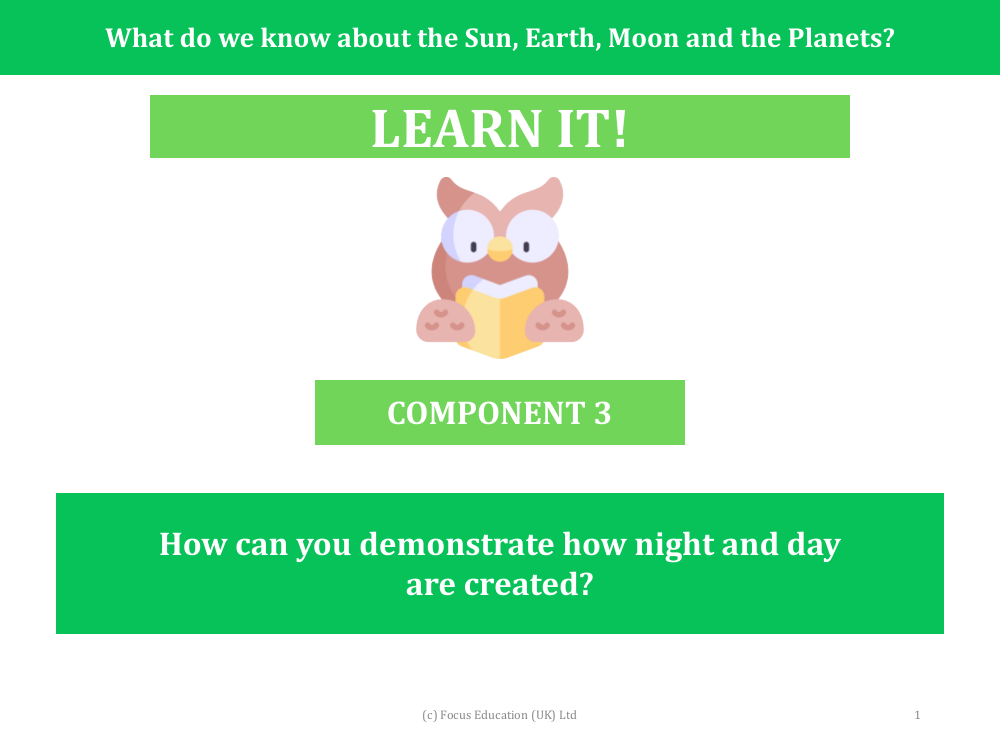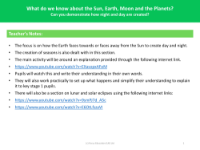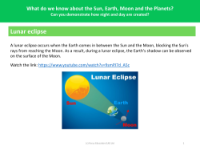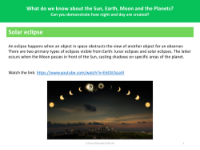How can you demonstrate how night and day are created? - Presentation

Science Resource Description
In an engaging and interactive presentation, students are tasked with exploring the celestial mechanics behind day and night. The key focus is on how the rotation of the Earth, as it orbits the Sun, results in different parts of the planet facing towards or away from the Sun, thereby creating day and night. The intriguing phenomenon of seasons is also touched upon, providing a fuller understanding of Earth's movements. To aid comprehension, students are encouraged to watch an educational video online, which explains these concepts in detail. After viewing, they are expected to discuss and write down their understanding in their own words, using diagrams to further clarify the concepts. This exercise not only deepens their grasp of the subject but also prepares them to simplify and convey this information to younger pupils, such as those in key stage 1.
The presentation also delves into the captivating topics of lunar and solar eclipses. Students are presented with a practical challenge to demonstrate the occurrence of day and night to year 2 children using simple materials like a torch, a dark room, and balls of varying sizes to represent celestial bodies. Furthermore, they are directed to watch additional online clips that illustrate the phenomena of lunar and solar eclipses. A lunar eclipse is described as the Earth positioning itself between the Sun and the Moon, casting a shadow on the Moon. In contrast, a solar eclipse occurs when the Moon moves in front of the Sun, blocking sunlight and casting a shadow on Earth. Students are encouraged to explain the differences between these two types of eclipses, using diagrams and sharing their descriptions with peers to ensure clarity and understanding.






